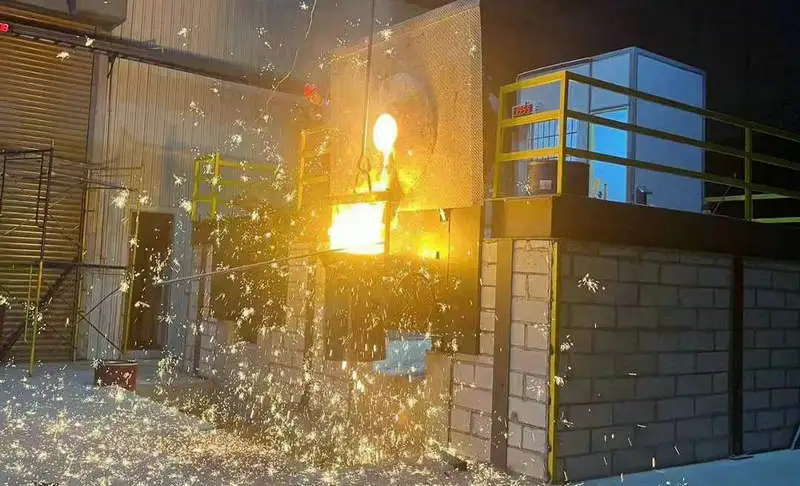Ang pagtunaw at pagtunaw ay mga proseso na nagsasangkot ng pagbabago ng mga sangkap mula sa isang estado patungo sa isa pa, but they serve different purposes and involve different materials and conditions.
What is melting
Definition: Melting is the process of changing a solid substance into a liquid by applying heat.
Purpose: The primary purpose of melting is to change the physical state of a substance without altering its chemical composition.
Materials: Melting can be applied to any solid material, such as ice, metals, wax, atbp.
Proseso: The substance is heated to its melting point, the temperature at which it changes from solid to liquid. For example, ice melts at 0°C (32°F) to become water.
Outcome: The substance remains chemically the same before and after melting. For instance, melted ice is still H₂O.
What is smelting
Definition: Smelting is a process used to extract a metal from its ore by using heat and a chemical reducing agent.
Purpose: The primary purpose of smelting is to separate metal from its ore, thereby refining it.
Materials: Smelting typically involves ores, which are natural mineral formations that contain metals in combination with other elements.
Proseso: The ore is heated to high temperatures in the presence of a reducing agent (such as carbon, in the form of coke or charcoal). This process reduces the metal oxides to pure metal and releases the non-metallic elements as gases or slag.
For example, iron ore (hematite, Fe₂O₃) is smelted in a blast furnace using coke as the reducing agent, producing molten iron and carbon dioxide.
Outcome: The result is the extraction of the desired metal from its ore, which can then be further refined and processed. For example, smelting hematite produces iron.
Key Differences
1. Purpose
Natutunaw na: To change the physical state of a substance.
Smelting: To extract and purify metals from their ores.
2. Chemical Composition
Natutunaw na: No change in chemical composition.
Smelting: Chemical composition changes as the metal is separated from its ore.
3. Materials
Natutunaw na: Any solid that can become liquid upon heating.
Smelting: Specifically ores and reducing agents to extract metals.
4. Outcome
Natutunaw na: Same substance in a different state.
Smelting: Purified metal extracted from ore.
In summary, while both processes involve heating and changing the state of materials, melting is a straightforward physical change, whereas smelting involves a more complex chemical transformation to obtain pure metals from ores.








